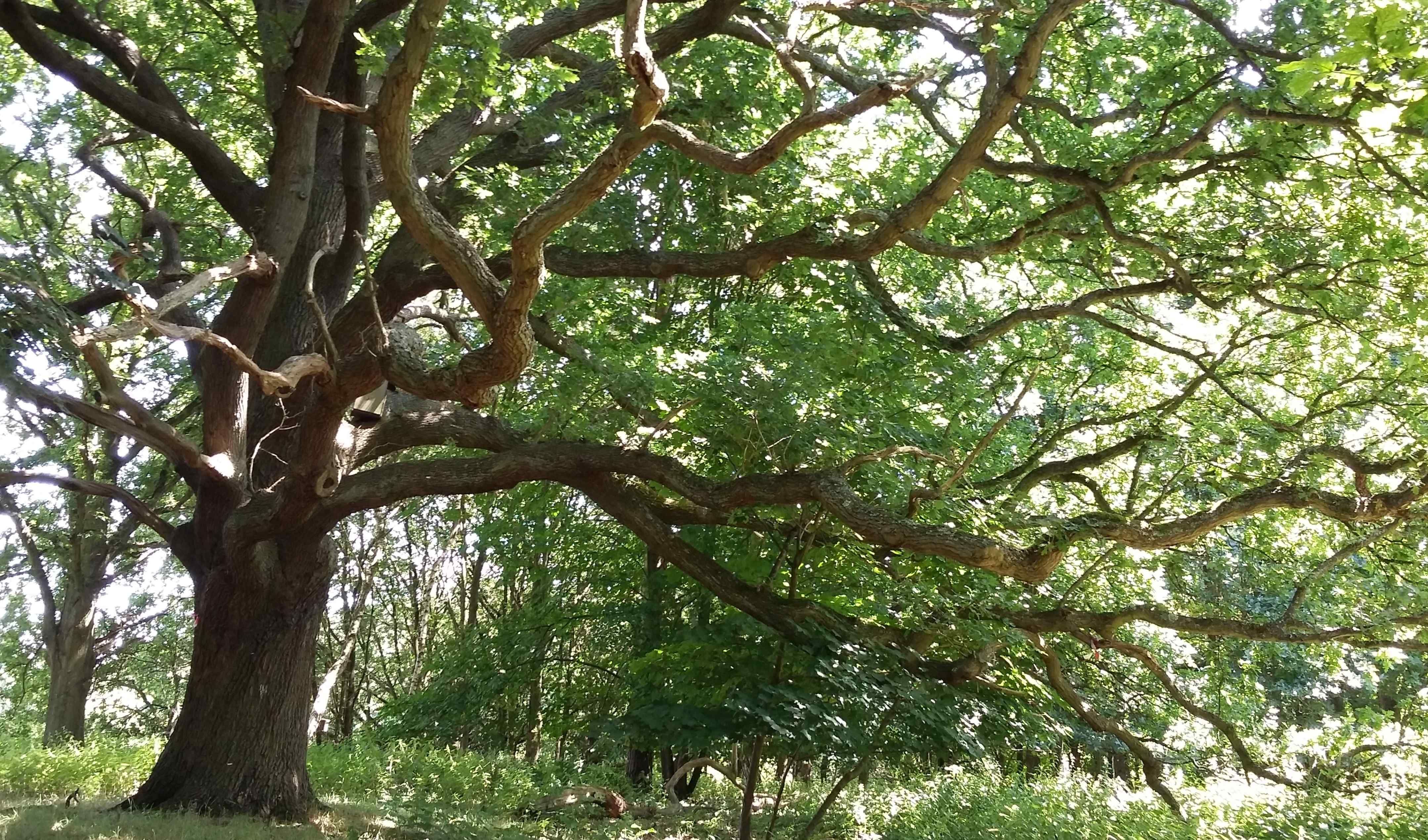Establishing temporal patterns of individual and population variations in species' ecological traits is important to understand the effects that changes in biotic or abiotic conditions cause to organisms. In August 1982 30 English oaks (Quercus robur) that ranged in girth from 43 to 621 cm were chosen for long-term monitoring. About half of the trees were part of existing woodlands and the other half were stand-alone trees in grassland and arable fields. The annual production of acorns and their predation by the alien cynipid gall-forming wasp species, Andricus quercuscalicis, has been monitored in these trees for over 30 years. The abundance of Knopper gall wasps in England has been rapidly increasing since the species was first recorded in the 1960's, resulting in a substantial decline in Q. robur reproductive output and the alteration of the biology of the native community of cynipid wasps' natural enemies. In late spring, females of A. quercuscalicis inject agamic eggs (parthenogenetic) into developing Q. robur acorns resulting in the formation of a gall that reduce the size of the acorn or force it out of its cup. During winter females that emerge from acorn galls will then inject eggs into Quercus cerris (Turkish oak) male flower buds which in turn host the next wasp sexual generation.
This experiment was created by Professor Mick Crawley and has been maintained since 1982 with the support of the Department of Life Sciences at Imperial College London.
Key findings
The average acorn crop for Silwood Park monitored trees fluctuates from year to year with low acorn years alternating with higher acorn years. Knopper galls destroy about 50% of the annual acorn crop, but in some years, close to 100% crop can be lost to these wasps. An acorn typically host one or two Knopper galls but as many as eight galls have been observed in a single cup (Crawley 2005).
google map for tree location
Detailed information oak_acorn
In August 1982 30 Quercus robur trees at Silwood Park were chosen for long-term monitoring. Since this year, annual data on growth, defoliation, acorn production, and infection by Knopper galls is collected in the fall for each tree. Tree number 8 died in the Great Storm of 1987 and tree 10 was heavily pruned losing its crown and limbs in 2016. Other trees have been struck by lightning losing limbs. Tree number 7, in particular, has been reduced to one branch since this happened in 1984. Find here information about each tree and its location.
Data collected include
- Peduncle (female inflorescence) production: counted in early spring in a number of shoots from branches accessible from the ground (ca 100) from 1982 to early 2000's.
- Acorn-cups or cupules per shoot: counted in a variable number of shoots that range from 100 to about 2000 in each tree.
- Number of Knopper galls developing in an acorn-cup: registered for a number of acorn-cups during fall in up to 1000 acorn-cups per tree.
- Tree growth: assessed by measuring girth at breast height and the lengths of a sample of primary shoots (shoots produced in first burst in May) and secondary shoots (lammas) when these are produced.
- Defoliation scores: estimated for shoots using a 7-point logarithmic scale (score = % of leaf area lost): 0 = none; 1 = 1 - 3%; 2 = 4 - 10%; 3 = 11 - 24%; 4 = 25 - 49%; 5 = 50 - 99%; 6 = 100%
Find here detailed information of monitored oaks (PDF, 2KB) and here the metadata file of this experiment (PDF, 188KB).
Crawley MJ, Akhteruzzaman M (1988) Individual variation in the phenology of oak trees and its consequences for herbivorous insects. Functional Ecology 2: 409–415.
Hails R, Crawley M (1991) The Population Dynamics of an Alien Insect: Andricus quercuscalicis (Hymenoptera: Cynipidae). Journal of Animal Ecology 60: 545–561.
Crawley MJ, Long CR (1995). Alternate bearing, predator satiation and seedling recruitment in Quercus Robur L . Journal of Ecology 83: 683–696.
Crawley MJ (2005). Silwood Park and its history. In: Crawley MJ, ed. The Flora of Berkshire. Harpenden, Hertfordshire, UK: Brambleby Books, 215–253
Related Links

